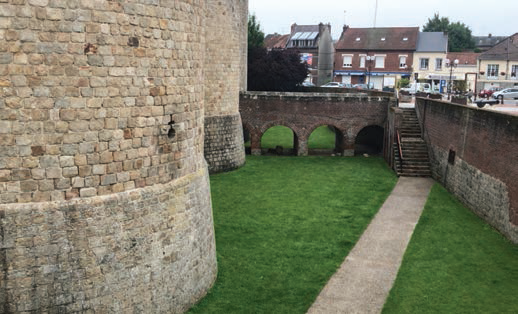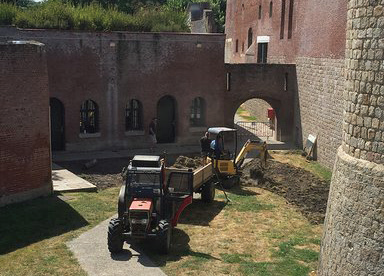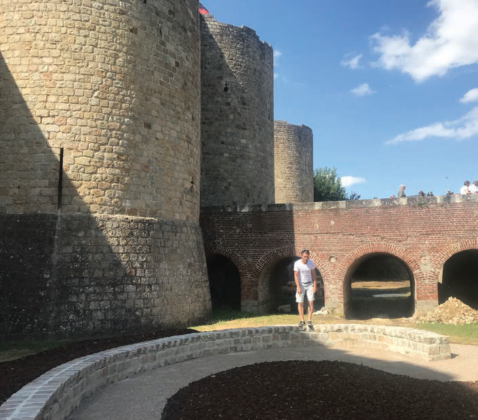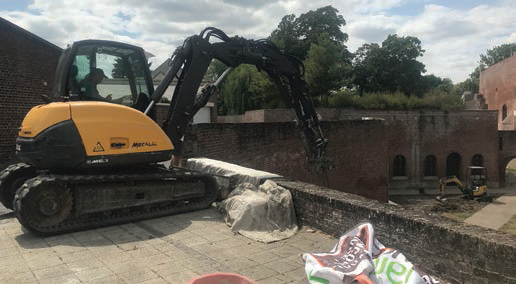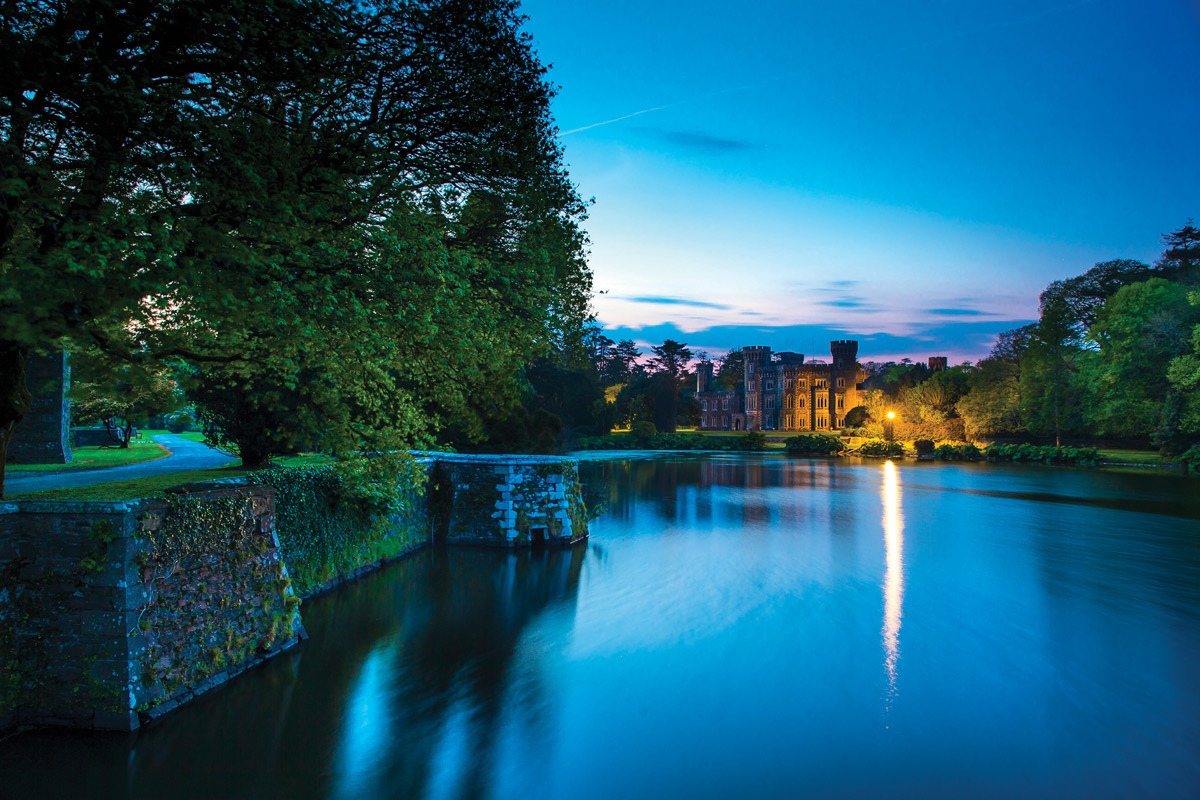Barry Lupton catches up with Peter Donegan, who is representing Ireland and Irish garden design with his Garden of Peace in Péronne, France
“Most of the designers had level areas to work with. Not me, my garden is being created in a moat”
| Having been involved in the creation of gardens for nearly 20 years, Peter Donegan has more than his fair share of stories to tell. Flamboyant, creative and outspoken, this North-Dublin based horticulturist and designer is perhaps best known for pink-boat show gardens, leading Patrick’s day parades in the US and his keenness to share plant knowledge. While he has devoted recent years pursuing online and radio activities, he is once again returning to the world of show gardens and this time he’s gone international.
“Helen Basson emailed about an international design competition and suggested I should go for it. So, I did”. The competition in question was to design and construct a Garden of Peace to commemorate the centenary of World War 1 in Péronne, France. “I’ve always believed in giving things a go, so I got my CV and proposal together and sent them in.” Within the week, Peter had heard back from France. He was one of only 15 internationally renowned designers to be selected; “I was gobsmacked but delighted! I felt that my years of hard work were starting to pay off. The judges loved my entry and loved what I’d achieved in the past. It was a game changer for me”. Before he knew it, Peter found himself resident in France, attending meetings and staring down into the dried-up moat of a chateau. “Though all the sites are of huge historical importance, most of the designers had level areas to work with. Not me, my garden is being created in a moat. Yes, a moat.” He’s right, his garden sits nine meters below the surrounding landscape and is crossed by a bridge. “The garden is split into two key spaces and is reached by a bridge. The bridge divides the garden into two spaces, one side is for family and friends to spend time together, while the other can be considered a little more formal”. Peter’s path to being selected for such a prestigious project was by no means an easy one. He is a consummate creative, willing to put his neck and reputation on the line to try something different; “I’ve always been willing to try new things, to challenge perceptions and try to achieve the impossible. My approach has won me many friends, and memories to last a lifetime and presented me with challenges,” he says. The challenges Peter faced are shared by anyone striving to be original: the money and support to make things happen. “It’s not been easy. In my early days, I really struggled to secure sponsorship for show gardens, but I had the self-belief to push on. I also received wise counsel from industry luminaries such as Jody Judge and Martin Tully, their words still ring in my years”. Like many in the industry, Peter’s burgeoning career took a serious hit in the recession. “One day I was receiving awards for restoring historic gardens and the next I was looking to the future and how I might pay the bills: if I could pay the bills. They were tough times. We all had them, but I didn’t let it get me down”. Now Peter is back in the world of garden creation with all guns blazing. “I was just speaking at the Landscape Show in the UK alongside Andrew Fisher Tomlin. There was a great buzz there and apparently, I’m the first Irish designer to be invited to speak at it. That said, there has been great support from the Irish Ambassadors office in Paris and presenting the garden to the Mayor of Péronne and the media in France is not something that comes with a usual garden design”. No doubt Peter’s ability to take on such challenges without being fazed was something that appealed to the judges as the garden he is creating represents the challenge of a lifetime. “As you can imagine, constructing a garden in another country, nine metres below ground on a historic site of world importance presents one or two obstacles,” he says. “It was vital we engaged local contractors for the build and materials had to be sourced locally too. This obviously presented language and translation issues, but the people of Péronne have been fantastic. They made it possible. They’ve made it a joy”. The concept underpinning Peter’s garden centres on peace but goes beyond it. One of the briefs of his garden was to acknowledge the sites past, the centenary, but also with an eye to the future – in a way that allowed visitors to feel happy; “I remember one of the first visits to the site, feeling the stonework of the Chateau, absorbing its history and wanting to breathe some smiles in to it. To bring a little moment to visitors. I wanted to find a way to make people sit longer together, to get the sound of those smiles to bounce off the stones and out into the street”. Formulating a planting scheme for his design presented a number of difficulties, not least of which was the nine-metre drop; “The garden is viewed from above at first and the tower, well, it towers over the space! I had to give great consideration to the use of trees”. Peter was keen to use the planting to connect to the adjacent streets. He spoke with media and restaurateurs about using flowers from the garden to decorate tables and to local schools about children taking fruit from the trees. “Moats are created to keep people out. I wanted this to turn this on its head by creating a beautiful, inviting space with flowering herbaceous, fruit trees and scented plants”. Surprisingly, the sourcing of plants did not present as much of a challenge as Peter had initially thought; “I spent seven weeks in France over four visits. Nursery owners and contractors were fantastic. I don’t speak French and most of them didn’t speak English, but we all understood botanical Latin, so we got on fine”. Despite Peter realising the project under his own steam, he is quick to acknowledge that the project would not have been possible without the help and support of a number colleagues and his French counterparts; “There are a lot of people I’d like to thanks, not least are Art et Jardins Hauts de France, the Irish Embassy in Paris and French Embassy in Dublin, Niamh Vaughan of the Irish in France association, The Commonwealth War Graves Commission and of course the People of Péronne for their kindness and generosity”. The garden will be opened on November 11, the centenary of the end of World War 1. ✽ |


